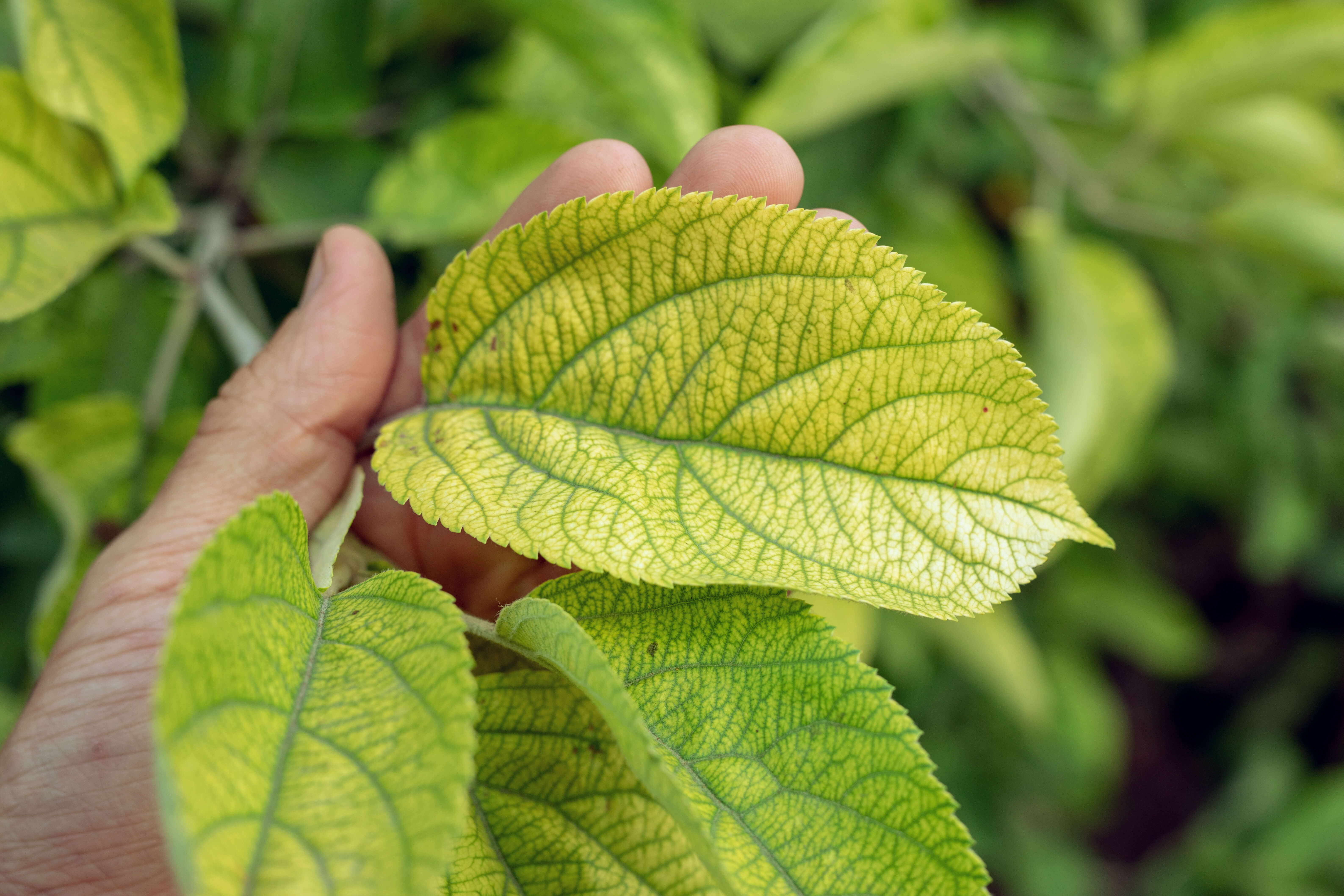
Select the type of search you want to perform, whether for professional or personal use. Remember that professional-use treatments require knowledge of their use, pose a higher health risk, and some countries have special policies regarding their use and purchase.
Pathogen:
-
Type:
Nutritional disorder
Risk:
ALTO



CONTROL
Chemical treatments
• SOLUBLE NITROGEN FERTILIZERS: Urea, ammonium nitrate, calcium nitrate; rapid absorption by the soil or fertigation.
• CONTROLLED RELEASE FERTILIZERS: Encapsulated or stabilized nitrogen; reduces losses and maintains prolonged supply.
• ORGANIC FERTILIZERS + NITROGEN: Compost, manure, guano; provide nutrients and improve soil structure.
• FERTILIZERS WITH AMINO ACIDS + NITROGEN: Promote foliar absorption and rapid recovery of the plant.
Ecological treatments
• SOLUBLE NITROGEN FERTILIZERS: Urea, ammonium nitrate, calcium nitrate; rapid absorption by the soil or fertigation.
• CONTROLLED RELEASE FERTILIZERS: Encapsulated or stabilized nitrogen; reduces losses and maintains prolonged supply.
• ORGANIC FERTILIZERS + NITROGEN: Compost, manure, guano; provide nutrients and improve soil structure.
• FERTILIZERS WITH AMINO ACIDS + NITROGEN: Promote foliar absorption and rapid recovery of the plant.
Biocontrol treatments
• NITROGEN-FIXING MICROORGANISMS: Bacteria such as Rhizobium, Azospirillum or Azotobacter that capture N₂ from the air and transform it into nitrogen available to the plant.
Recommendations
To maintain adequate nitrogen levels and ensure healthy growth, it is important to implement strategies that optimize the uptake and availability of this nutrient in the soil, combining fertilization, soil management, and cultivation practices.
• Apply nitrogen fertilizers according to the crop type.
• Incorporate compost or well-rotted manure.
• Grow green manures, especially legumes.
• Maintain adequate irrigation to prevent leaching.
• Improve soil aeration.
• Adjust soil pH to the optimal range.
• Rotate crops with legumes for natural nitrogen fixation.
• Control weeds that compete for nutrients.
TEMPERATURE AND HUMIDITY
-
-
TRANSMISSION ROUTES
-
Pathogen:
-
Type:
Nutritional disorder
Risk:
ALTO



DESCRIPTION
Nitrogen deficiency is one of the most common nutritional problems in agriculture and gardening. This nutrient is essential for the formation of chlorophyll, proteins, and enzymes, so its deficiency directly limits plant growth and productivity. Soils lacking organic matter, excessive irrigation, leaching from heavy rainfall, or an inadequate pH are common causes of this disorder.
Nitrogen deficiency is usually first noticed in the older leaves, which appear pale and weakened. Over time, the plant loses vigor, reduces its production, and becomes more susceptible to pests and diseases.
Typical symptoms:
• Yellow or pale green lower leaves (chlorosis).
• Thin stems and reduced growth.
• Small leaves and premature drop.
• Early and forced flowering.
• Poor fruit production or grains with low protein content.
Nitrogen deficiency progresses gradually, beginning with mild signs and reaching critical stages if not corrected promptly.
Developmental stages:
• Initial: Mature leaves are lighter than normal.
• Intermediate stage: Yellowing progresses from the lower leaves to the upper ones.
• Advanced: Stems and veins take on a reddish or purplish hue.
• Final: Generalized chlorosis, leaf necrosis, and premature wilting.
• Final consequence: sharp reduction in yield and even death of the plant.
TREATMENTS
• SOLUBLE NITROGEN FERTILIZERS: Urea, ammonium nitrate, calcium nitrate; rapid absorption by the soil or fertigation.
• CONTROLLED-RELEASE FERTILIZERS: Encapsulated or stabilized nitrogen; reduces losses and maintains a prolonged supply.
• ORGANIC FERTILIZERS + NITROGEN: Compost, manure, guano; provide nutrients and improve soil structure.
• FERTILIZERS WITH AMINO ACIDS + NITROGEN: Promote foliar absorption and rapid plant recovery.
• NITROGEN-FIXING MICROORGANISMS: Bacteria such as Rhizobium, Azospirillum, or Azotobacter that capture N₂ from the air and transform it into plant-available nitrogen.
RECOMMENDATIONS
To maintain adequate nitrogen levels and ensure healthy growth, it is important to implement strategies that optimize the uptake and availability of this nutrient in the soil, combining fertilization, soil management, and cultivation practices.
• Apply nitrogen fertilizers according to the crop type.
• Incorporate compost or well-rotted manure.
• Grow green manures, especially legumes.
• Maintain adequate irrigation to prevent leaching.
• Improve soil aeration.
• Adjust soil pH to the optimal range.
• Rotate crops with legumes for natural nitrogen fixation.
• Control weeds that compete for nutrients.
TEMPERATURE AND HUMIDITY
-
-
TRANSMISSION ROUTES
-
*Los tratamientos recomendados no dejan de ser recomendaciones según las bases de datos de las autoridades y en ningún momento sustituyen las directrices marcadas según la legislación de cada país
